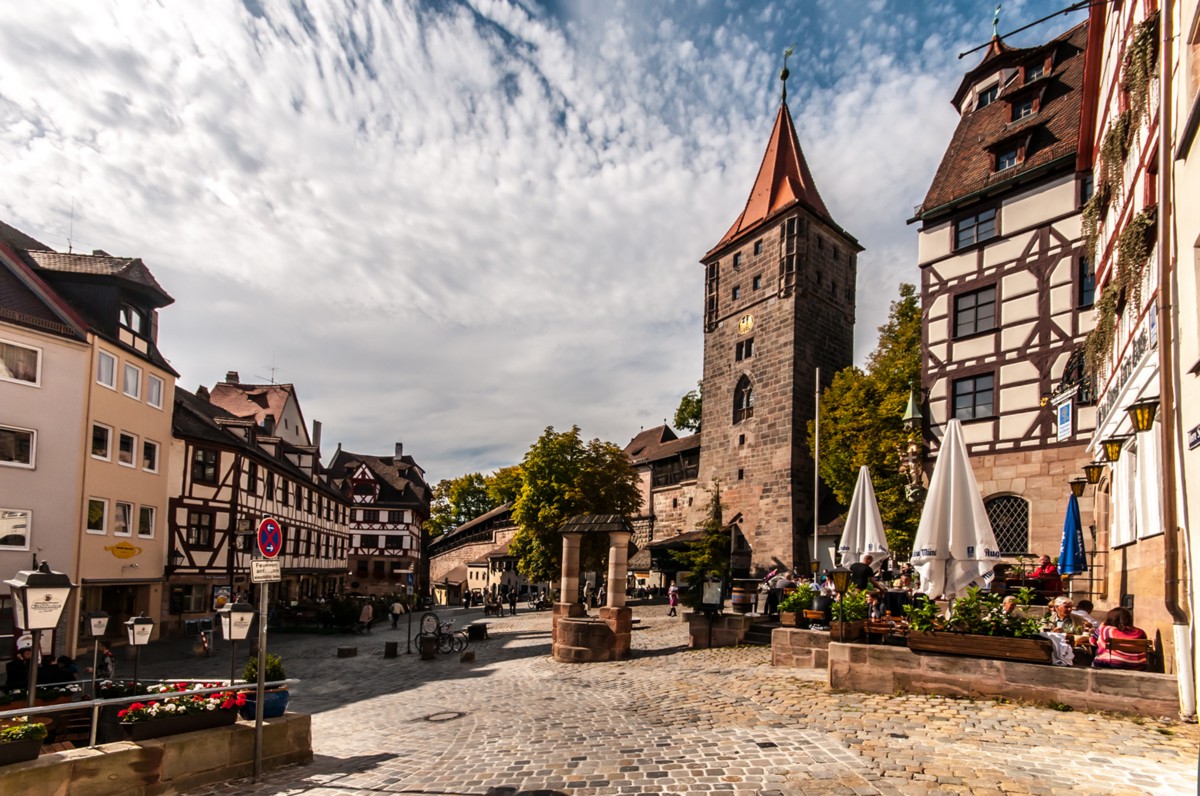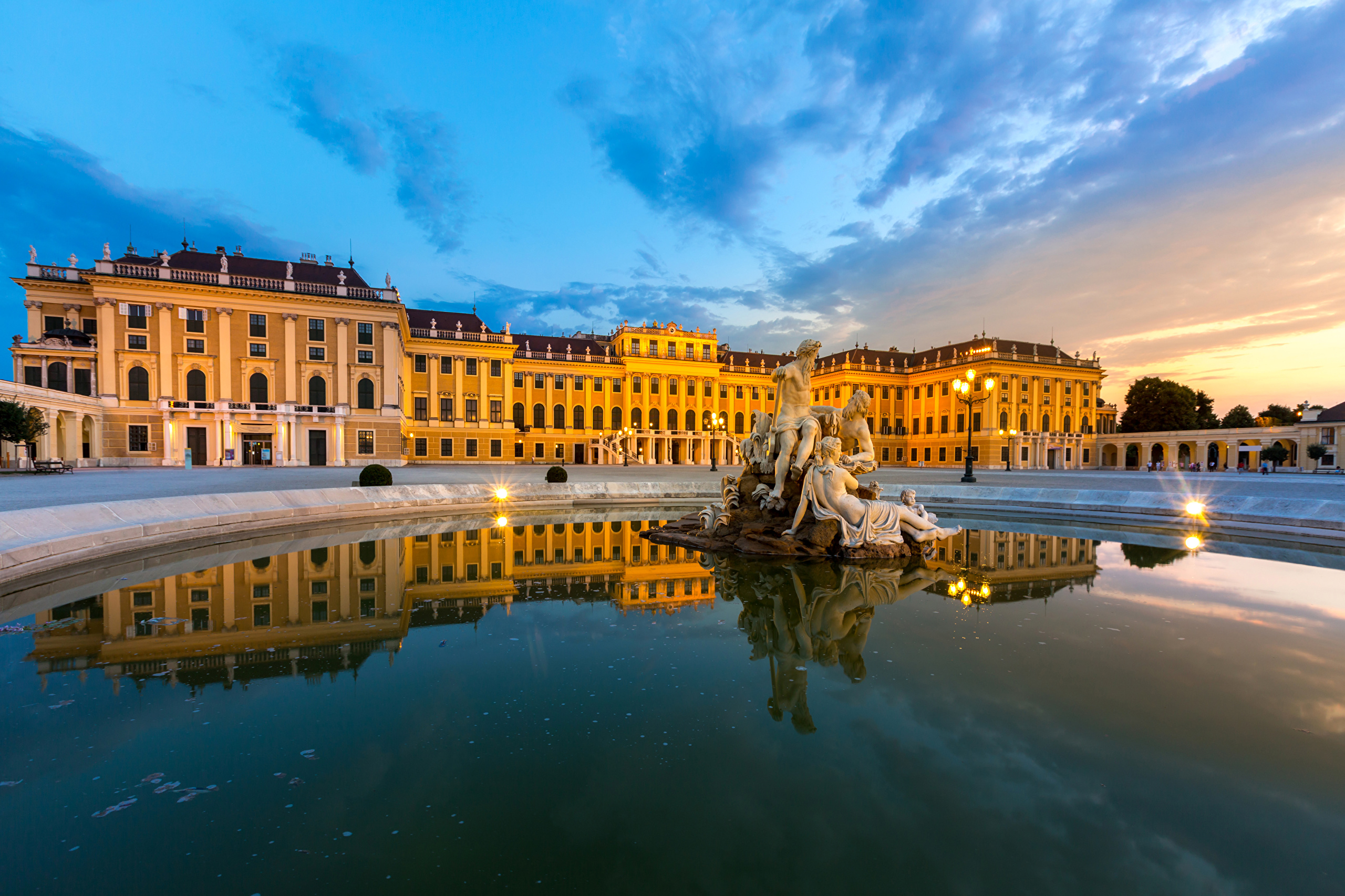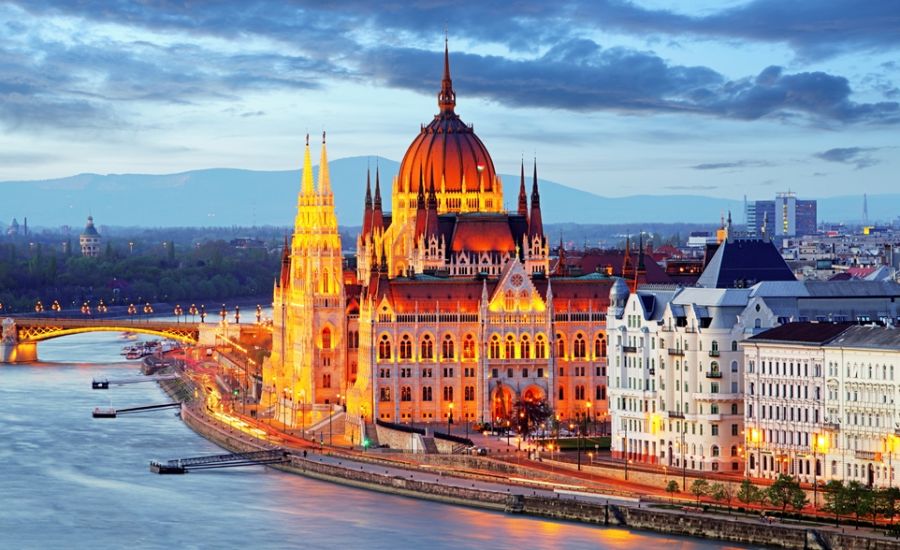

Spanning 2,000 kilometers across Europe, from Amsterdam at the North Sea to Budapest the “Queen of the Danube”, the castles lining the Rhine, Main and Danube rivers are testaments to the majesty of European history. The beauty of the Rhine with its castles and cathedral cities, the engineering feat of the Main-Danube canal and the wonders of the Danube River are all highlights along the way.
Traverse five countries (Netherlands, Germany, Austria, Slovakia & Hungary) with visits to numerous capital cities, while passing through the unique landscapes of the myth-enshrouded Lorelei, the “Schlögener Schlinge” below Passau, the picturesque UNESCO Wachau Valley region, and the Danube knee at Visegrad. Join us as we witness several hundred years of history in the heart of Europe.
Please note: Due to low clearance heights at bridges and locks on the river route between Frankfurt and Regensburg, access to the sun deck might be restricted for safety reasons.
| Cruise Region : Northern Europe, Europe |
| Company : Lueftner Cruises |
| Ship : AMADEUS Riva |
| Journey Start : Tue 06 May 2025 |
| Journey End : Tue 20 May 2025 |
| Count Nights : 14 nights |
| Day | Port | Date | Arrival | Departure |
|---|---|---|---|---|
| 1 | Amsterdam / Netherlands | Tue 06 May | ||
| 2 | Amsterdam / Netherlands | Wed 07 May | ||
| 2 | Utrecht / Netherlands | Wed 07 May | ||
| 3 | Cologne / Germany | Thu 08 May | ||
| 4 | Rüdesheim / Germany | Fri 09 May | ||
| 5 | Miltenberg / Germany | Sat 10 May | ||
| 5 | Wertheim am Main / Germany | Sat 10 May | ||
| 6 | Wurzburg / Germany | Sun 11 May | ||
| 7 | Bamberg / Germany | Mon 12 May | ||
| 8 | Nuremberg / Germany | Tue 13 May | ||
| 9 | Regensburg / Germany | Wed 14 May | ||
| 10 | Passau / Germany | Thu 15 May | ||
| 11 | Emmersdorf an der Donau / Austria | Fri 16 May | ||
| 11 | Dürnstein / Austria | Fri 16 May | ||
| 11 | Vein / Austria | Fri 16 May | ||
| 12 | Vein / Austria | Sat 17 May | ||
| 13 | Bratislava / Slovakia | Sun 18 May | ||
| 14 | Budapest / Hungary | Mon 19 May | ||
| 15 | Budapest / Hungary | Tue 20 May |
Travel Terms & Conditions
PREAMBLE
These travel conditions are issued in the name of the carrier, Lüftner Cruises GmbH / A-6020 Innsbruck, for the travel programs included in this brochure. In the following, this is referred to as “the carrier”. The transportation of passengers and baggage on any of the vessels offered is governed solely by the Terms and Conditions of the Passenger Ticket Contract (available on request).
PAYMENT POLICY
A deposit of 10% per person is required to secure a confirmed reservation. When more than one cruise is booked, deposit and payment policies apply per cruise. The balance is due for payment no later than 20 days prior to departure, despite no further request for payment being made. All reservations are subject to cancellation if payments are not received by the due date, and in such a case the carrier is entitled to cancel the reservation/s in accordance with the cancellation fees specified in these terms and conditions. Upon full payment by the participant(s) of the amount specified in the invoice, the carrier agrees to arrange for the provision of the services as described in this brochure. Your payment or acceptance of a ticket constitutes your agreement to the terms and conditions of travel.
CANCELLATION POLICY
In cases of cancellation the carrier has the right to demand the following cancellation fees, calculated as a percentage of the travel price and dependent on the number of days left until the planned departure date:
Days Before Departure
121 days and more 10%
120 – 90 days 15%
89 – 60 days 35%
59 – 30 days 50%
29 – 15 days 80%
14 – 1 day(s) 85%
on departure day 90%
Cancellations must be made in writing. Cancellation invoices are due for payment as soon as they are received
Suites & Staterooms
Luxury accommodation in an outside river-view stateroom of your choice: Spacious Mozart Suites with a walk-out balcony, stateroom cabins on Mozart and Strauss Decks with drop-down Panorama Retractable Windows offering a wide-open view (except Amadeus Brilliant)
Individual climate control and in-room safe
Choice of bed configuration in all categories (double or twin bedding)
Gourmet Dining
Gourmet dining featuring breakfast, multi-course lunches and dinners with menu choices (including vegetarian options), afternoon tea and late-night snack
Free-flowing hand-selected wines from the best wine regions of Europe served with dinner on board
Coffee and tea available 24 hours a day in the Amadeus Club
Welcome and Farewell Cocktail Reception, Welcome Dinner and Captain’s Gala Dinner
Voyage of Discovery
Personalized service of an experienced, multilingual AMADEUS Cruise Director
AMADEUS digital audio system for all guided excursions
Variety of enriching onboard programs, including fascinating lectures, cooking demonstrations, local cultural performances, and music by our onboard musicians
Complimentary use of onboard bicycles for independent exploration
Onboard fitness center open 24 hours a day
All port taxes, embarkation, disembarkation and lock fees included in your cruise fare

Amsterdam is the capital city and most populous municipality of the Netherlands. Its status as the capital is mandated by the Constitution of the Netherlands, although it is not the seat of the government, which is The Hague. Amsterdam has a population of 851,373 within the city proper, 1,351,587 in the urban area] and 2,410,960 in the metropolitan area. The city is located in the province of North Holland in the west of the country but is not its capital, which is Haarlem. The metropolitan area comprises much of the northern part of the Randstad, one of the larger conurbations in Europe, with a population of approximately 8 million.

Amsterdam is the capital city and most populous municipality of the Netherlands. Its status as the capital is mandated by the Constitution of the Netherlands, although it is not the seat of the government, which is The Hague. Amsterdam has a population of 851,373 within the city proper, 1,351,587 in the urban area] and 2,410,960 in the metropolitan area. The city is located in the province of North Holland in the west of the country but is not its capital, which is Haarlem. The metropolitan area comprises much of the northern part of the Randstad, one of the larger conurbations in Europe, with a population of approximately 8 million.

Utrecht is the fourth-largest city and a municipality of the Netherlands, capital and most populous city of the province of Utrecht. It is located in the eastern corner of the Randstadconurbation, and in the very centre of mainland Netherlands, and had a population of 345,080 in 2017.
Utrecht's ancient city centre features many buildings and structures several dating as far back as the High Middle Ages. It has been the religious centre of the Netherlands since the 8th century. It lost the status of prince-bishopric but remains the main religious centre in the country. Utrecht was the most important city in the Netherlands until the Dutch Golden Age, when it was surpassed by Amsterdam as the country's cultural centre and most populous city.
Utrecht is host to Utrecht University, the largest university in the Netherlands, as well as several other institutions of higher education. Due to its central position within the country, it is an important transport hub for both rail and road transport. It has the second highest number of cultural events in the Netherlands, after Amsterdam. In 2012, Lonely Planet included Utrecht in the top 10 of the world’s unsung places.

Cologne is the largest city of Germany's most populous federal state of North Rhine-Westphalia, and its 1 million+ (2016) inhabitants make it the fourth most populous city in Germany after Berlin, Hamburg, and Munich. The largest city on the Rhine, it is also the most populous city both of the Rhine-Ruhr Metropolitan Region, which is Germany's largest and one of Europe's major metropolitan areas, and of the Rhineland. Centred on the left bank of the Rhine, Cologne is about 45 kilometres (28 mi) southeast of North Rhine-Westphalia's capital of Düsseldorf and 25 kilometres (16 mi) northwest of Bonn. It is the largest city in the Central Franconian and Ripuarian dialect areas.
The city's famous Cologne Cathedral (Kölner Dom) is the seat of the Catholic Archbishop of Cologne. There are many institutions of higher education in the city, most notably the University of Cologne (Universität zu Köln), one of Europe's oldest and largest universities, the Technical University of Cologne (Technische Hochschule Köln), Germany's largest university of applied sciences, and the German Sport University Cologne (Deutsche Sporthochschule Köln), Germany's only sport university. Cologne Bonn Airport (Flughafen Köln/Bonn) is Germany's seventh-largest airport and lies in the southeast of the city. The main airport for the Rhine-Ruhr region is Düsseldorf Airport.











Vienna is the federal capital and largest city of Austria, and one of the nine states of Austria. Vienna is Austria's primate city, with a population of about 1.9 million (2.6 million within the metropolitan area, nearly one third of Austria's population), and its cultural, economic, and political centre. It is the 7th-largest city by population within city limits in the European Union. Until the beginning of the 20th century, it was the largest German-speaking city in the world, and before the splitting of the Austro-Hungarian Empire in World War I, the city had 2 million inhabitants. Today, it has the second largest number of German speakers after Berlin.Vienna is host to many major international organizations, including the United Nations and OPEC. The city is located in the eastern part of Austria and is close to the borders of the Czech Republic, Slovakia, and Hungary. These regions work together in a European Centrope border region. Along with nearby Bratislava, Vienna forms a metropolitan region with 3 million inhabitants. In 2001, the city centre was designated a UNESCO World Heritage Site. In July 2017 it was moved to the list of World Heritage in Danger.
Apart from being regarded as the City of Music[ because of its musical legacy, Vienna is also said to be "The City of Dreams" because it was home to the world's first psychoanalyst – Sigmund Freud. The city's roots lie in early Celticand Roman settlements that transformed into a Medieval and Baroque city, and then the capital of the Austro-Hungarian Empire. It is well known for having played an essential role as a leading European music centre, from the great age of Viennese Classicism through the early part of the 20th century. The historic centre of Vienna is rich in architectural ensembles, including Baroque castles and gardens, and the late-19th-century Ringstraße lined with grand buildings, monuments and parks.
Vienna is known for its high quality of life. In a 2005 study of 127 world cities, the Economist Intelligence Unit ranked the city first (in a tie with Vancouver and San Francisco) for the world's most liveable cities. Between 2011 and 2015, Vienna was ranked second, behind Melbourne. In 2018, it replaced Melbourne as the number one spot. For eight consecutive years (2009–2016), the human-resource-consulting firm Mercer ranked Vienna first in its annual "Quality of Living" survey of hundreds of cities around the world, a title the city still held in 2016. Monocle's 2015 "Quality of Life Survey" ranked Vienna second on a list of the top 25 cities in the world "to make a base within."
The UN-Habitat classified Vienna as the most prosperous city in the world in 2012/2013. The city was ranked 1st globally for its culture of innovation in 2007 and 2008, and sixth globally (out of 256 cities) in the 2014 Innovation Cities Index, which analyzed 162 indicators in covering three areas: culture, infrastructure, and markets. Vienna regularly hosts urban planning conferences and is often used as a case study by urban planners.
Between 2005 and 2010, Vienna was the world's number-one destination for international congresses and conventions. It attracts over 6.8 million tourists a year.

Vienna is the federal capital and largest city of Austria, and one of the nine states of Austria. Vienna is Austria's primate city, with a population of about 1.9 million (2.6 million within the metropolitan area, nearly one third of Austria's population), and its cultural, economic, and political centre. It is the 7th-largest city by population within city limits in the European Union. Until the beginning of the 20th century, it was the largest German-speaking city in the world, and before the splitting of the Austro-Hungarian Empire in World War I, the city had 2 million inhabitants. Today, it has the second largest number of German speakers after Berlin.Vienna is host to many major international organizations, including the United Nations and OPEC. The city is located in the eastern part of Austria and is close to the borders of the Czech Republic, Slovakia, and Hungary. These regions work together in a European Centrope border region. Along with nearby Bratislava, Vienna forms a metropolitan region with 3 million inhabitants. In 2001, the city centre was designated a UNESCO World Heritage Site. In July 2017 it was moved to the list of World Heritage in Danger.
Apart from being regarded as the City of Music[ because of its musical legacy, Vienna is also said to be "The City of Dreams" because it was home to the world's first psychoanalyst – Sigmund Freud. The city's roots lie in early Celticand Roman settlements that transformed into a Medieval and Baroque city, and then the capital of the Austro-Hungarian Empire. It is well known for having played an essential role as a leading European music centre, from the great age of Viennese Classicism through the early part of the 20th century. The historic centre of Vienna is rich in architectural ensembles, including Baroque castles and gardens, and the late-19th-century Ringstraße lined with grand buildings, monuments and parks.
Vienna is known for its high quality of life. In a 2005 study of 127 world cities, the Economist Intelligence Unit ranked the city first (in a tie with Vancouver and San Francisco) for the world's most liveable cities. Between 2011 and 2015, Vienna was ranked second, behind Melbourne. In 2018, it replaced Melbourne as the number one spot. For eight consecutive years (2009–2016), the human-resource-consulting firm Mercer ranked Vienna first in its annual "Quality of Living" survey of hundreds of cities around the world, a title the city still held in 2016. Monocle's 2015 "Quality of Life Survey" ranked Vienna second on a list of the top 25 cities in the world "to make a base within."
The UN-Habitat classified Vienna as the most prosperous city in the world in 2012/2013. The city was ranked 1st globally for its culture of innovation in 2007 and 2008, and sixth globally (out of 256 cities) in the 2014 Innovation Cities Index, which analyzed 162 indicators in covering three areas: culture, infrastructure, and markets. Vienna regularly hosts urban planning conferences and is often used as a case study by urban planners.
Between 2005 and 2010, Vienna was the world's number-one destination for international congresses and conventions. It attracts over 6.8 million tourists a year.

Bratislava is the capital of Slovakia. With a population of about 425,000, it is one of the smaller capitals of Europe but still the country's largest city. The greater metropolitan area is home to more than 650,000 people. Bratislava is in southwestern Slovakia, occupying both banks of the River Danube and the left bank of the River Morava. Bordering Austria and Hungary, it is the only national capital that borders two sovereign states.
The city's history has been strongly influenced by people of different nations and religions, namely (in alphabetical order) Austrians, Bulgarians, Croats, Czechs, Germans, Hungarians, Jews, Serbs and Slovaks. It was the coronation site and legislative center of the Kingdom of Hungary from 1536 to 1783, and has been home to many Slovak, Hungarian and German historical figures.
Bratislava is the political, cultural and economic centre of Slovakia. It is the seat of the Slovak president, the parliamentand the Slovak Executive. It has several universities, and many museums, theatres, galleries and other cultural and educational institutions. Many of Slovakia's large businesses and financial institutions have headquarters there.

the capital of Hungary, in the northern central part of the country; population 1,712,210 (2009). It was formed in 1873 by the union of the city of Buda on the right bank of the Danube River with the city of Pest on the left.

the capital of Hungary, in the northern central part of the country; population 1,712,210 (2009). It was formed in 1873 by the union of the city of Buda on the right bank of the Danube River with the city of Pest on the left.